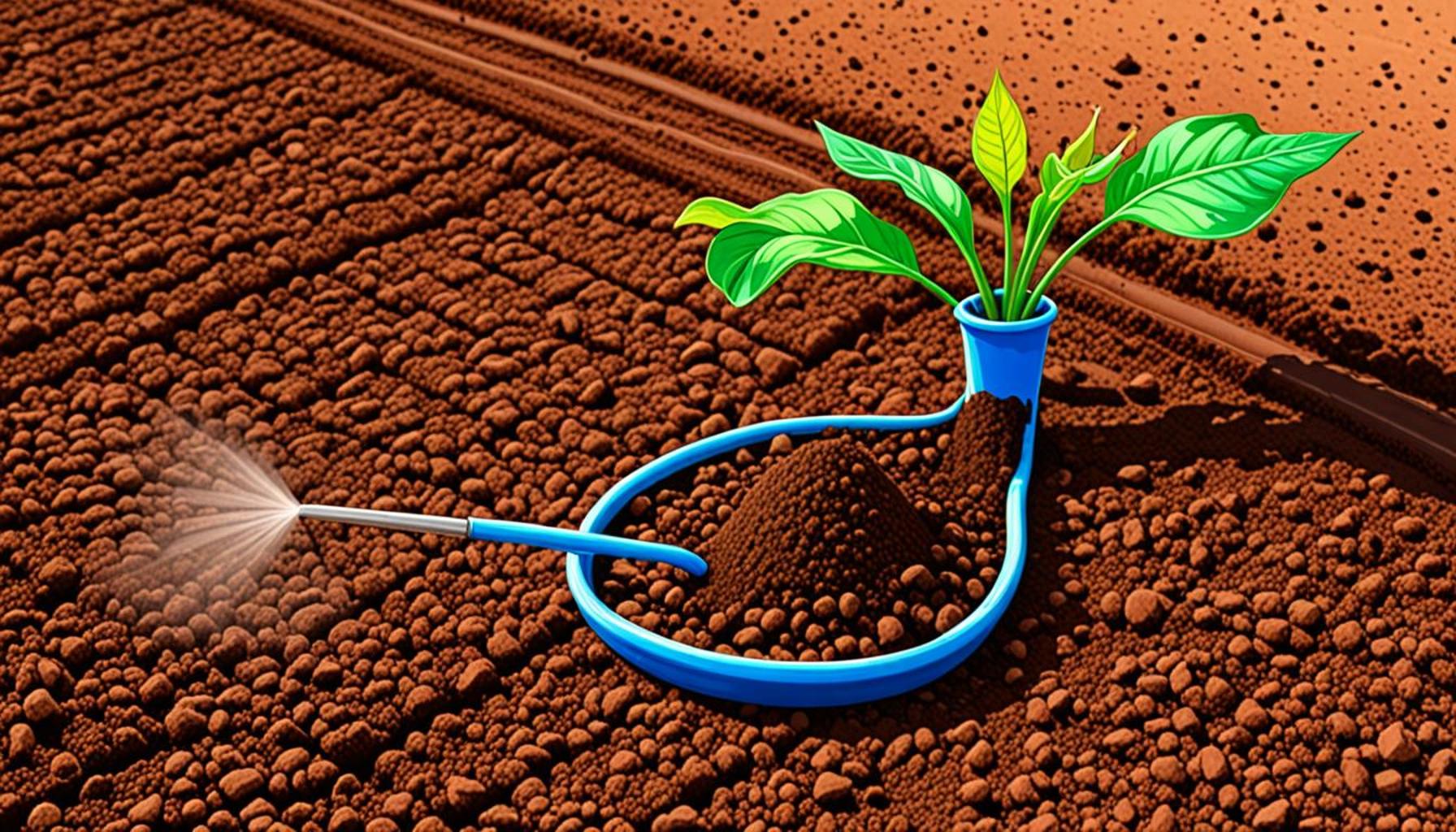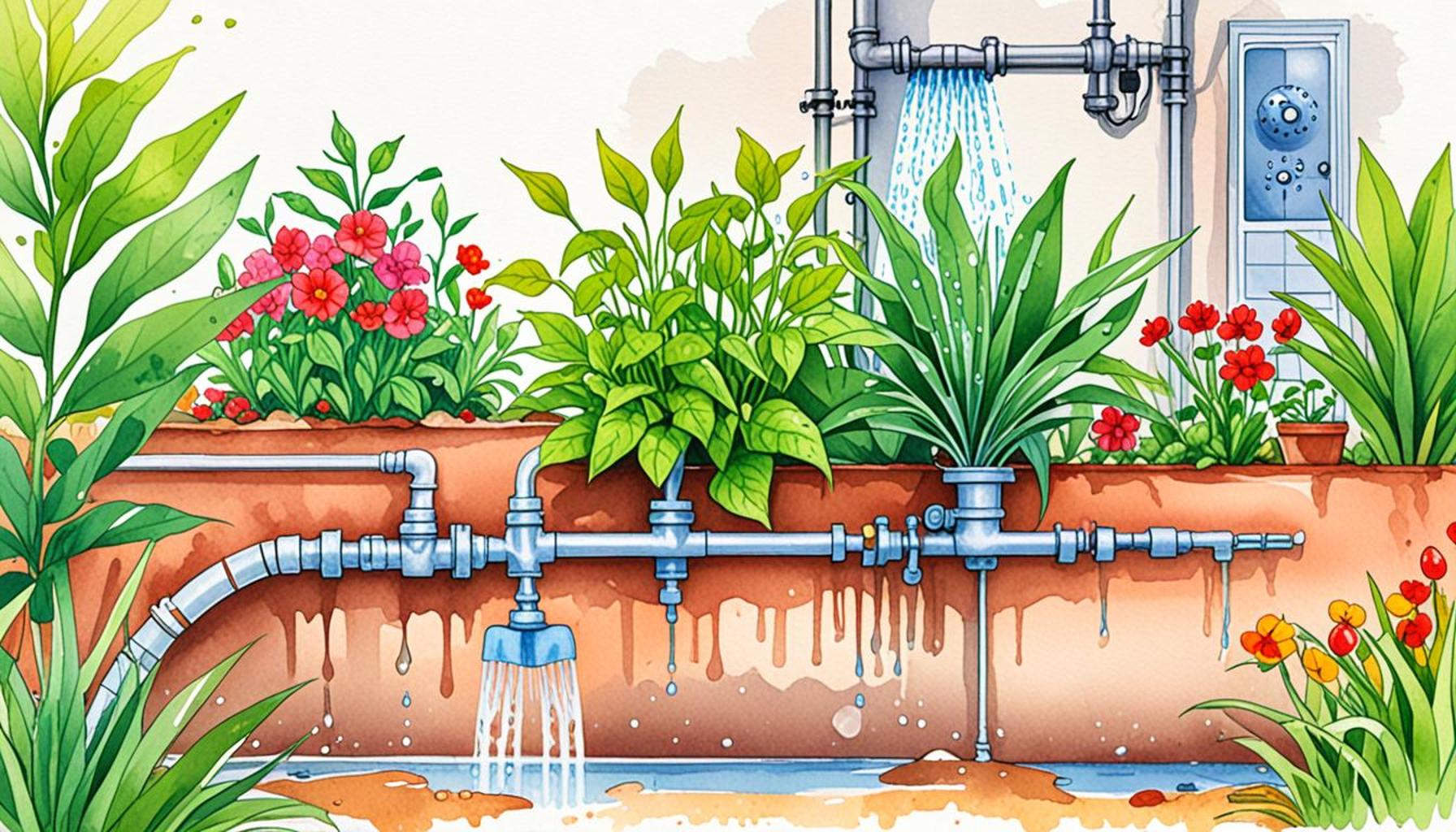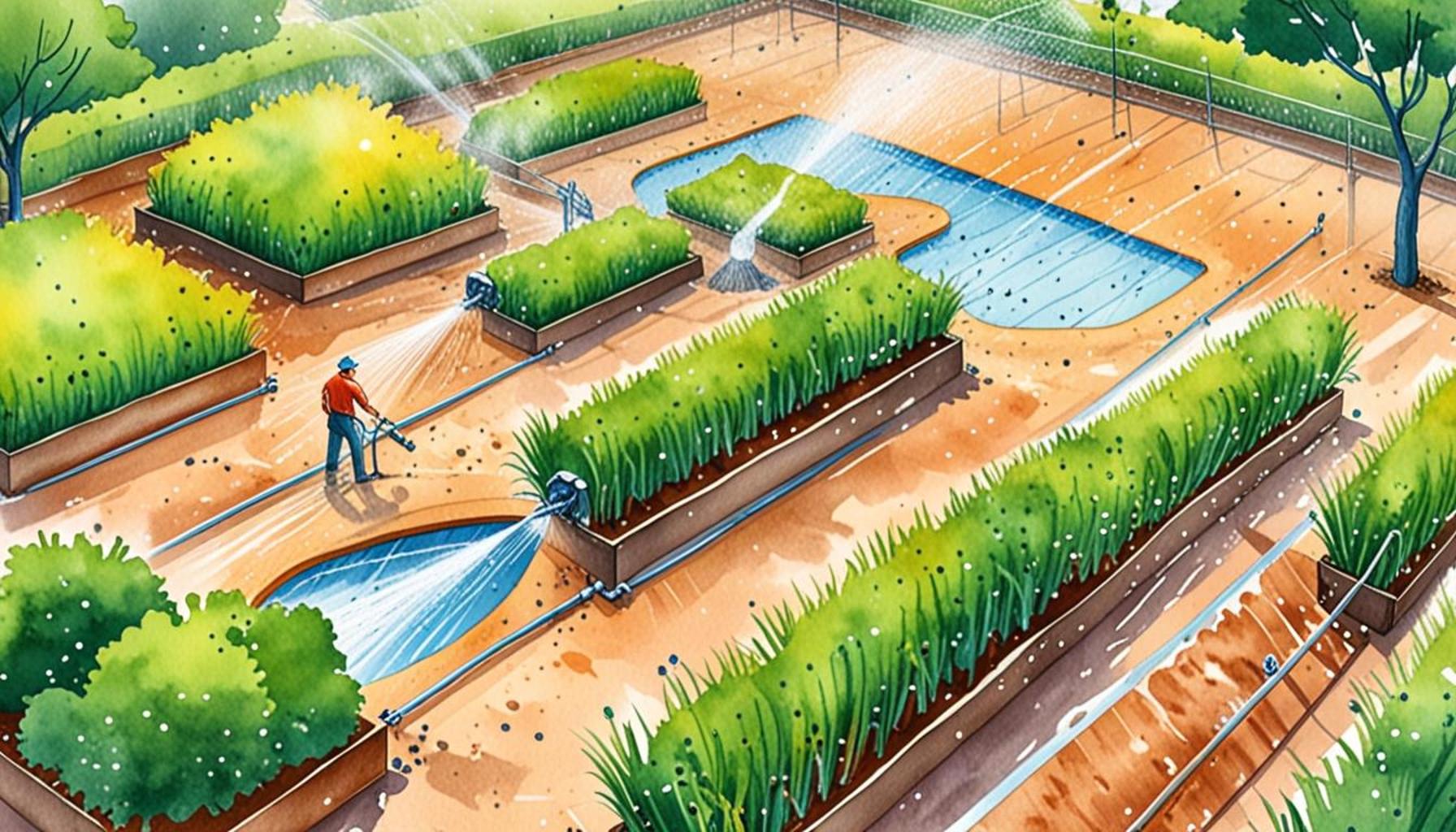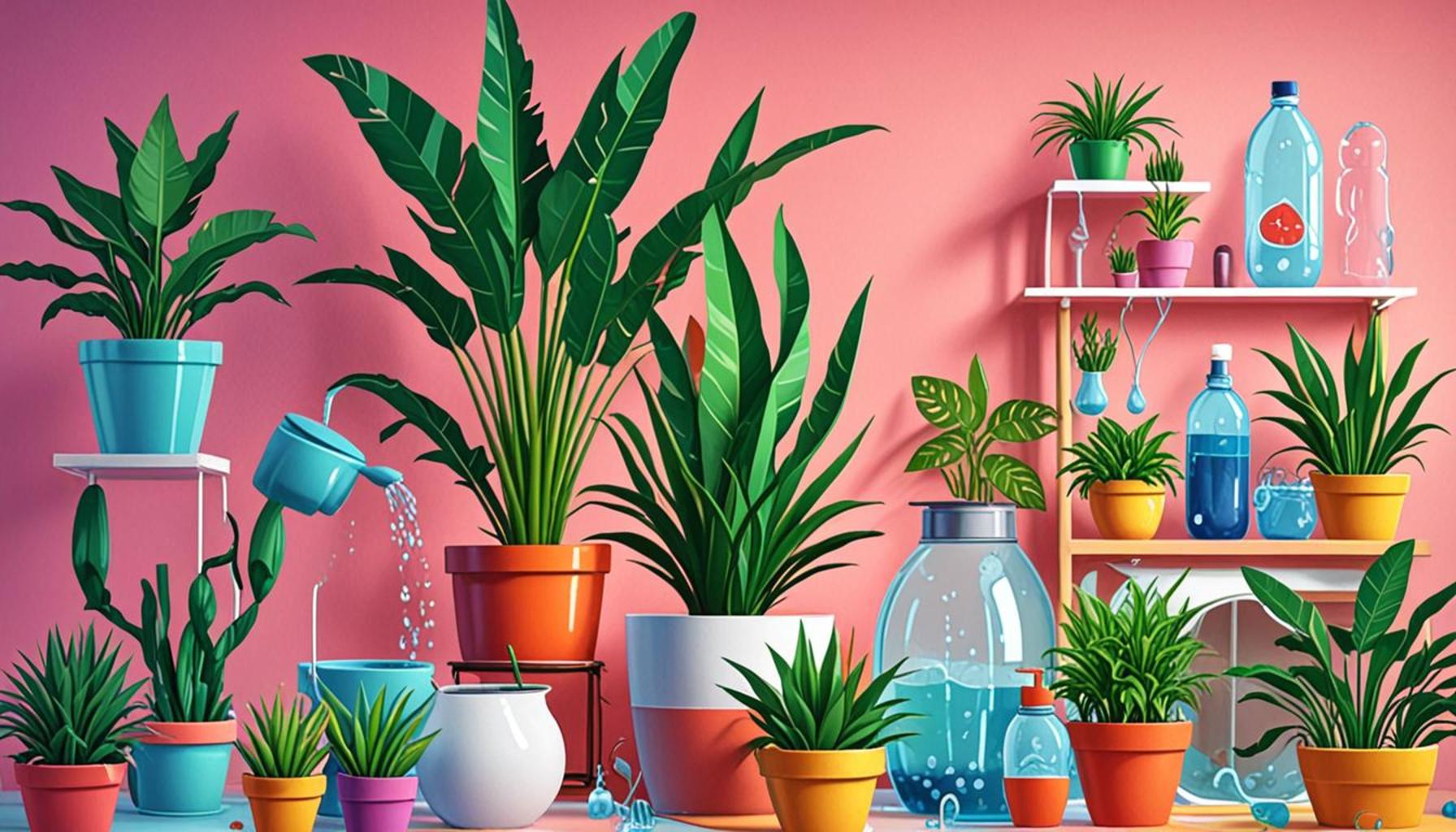The Influence of Soil on the Irrigation Needs of Plants

The Crucial Link Between Soil Characteristics and Plant Irrigation
Soil is often viewed as merely a growing medium for plants, but its role extends far beyond that. The characteristics of soil significantly influence the irrigation needs of plants, shaping how much water is required for optimal growth. Understanding these characteristics can empower both novice gardeners and seasoned agricultural professionals to make informed decisions that enhance plant health and yield.
Different types of soil have unique attributes that directly impact water retention and drainage, such as:
- Sandy soil: Characterized by larger particles, sandy soil drains quickly, requiring more frequent irrigation. This type of soil is particularly common in regions like Florida, where quick drainage is often a necessity due to heavy rainfall but can lead to challenges in water retention.
- Clay soil: With its fine particles, clay soil retains water, reducing the need for constant watering. However, it can become compacted, leading to poor drainage and possible waterlogging issues, particularly in areas like the Midwest where heavy clay deposits are common.
- Loamy soil: Often regarded as the gold standard for gardening, loamy soil is a balanced mix of sand, silt, and clay. This combination allows for adequate drainage while retaining enough moisture, making it ideal for a variety of plants, from vegetables to flowers.
Understanding these characteristics is crucial for successful gardening and agriculture. For instance, farmers in arid regions like Southern California face specific challenges related to irrigation management directly tied to local soil types. In these areas, where water scarcity is an ongoing concern, choosing the right soil and understanding its properties can have significant implications for crop yield and sustainability.
Furthermore, factors like soil pH and nutrient content also play a pivotal role in plant health. Soil pH can influence the availability of essential nutrients to plants, while nutrient-rich soils can enhance water absorption capacity, boosting overall plant health and growth rates. For example, acidic soils may hinder the uptake of critical nutrients like nitrogen and phosphorus, leading to stunted growth and poor yields.
In this article, we will delve deeper into how soil composition influences irrigation practices and what this means for both seasoned farmers and home gardeners alike. With an informed understanding of these relationships, readers can enhance their planting strategies significantly, leading to bountiful gardens and productive farms. Getting to know your soil may just be the first step towards achieving a flourishing landscape!
DISCOVER MORE: Click here for essential gardening tips
Understanding Soil Types and Their Impact on Water Requirements
To fully grasp the extent of the influence of soil on the irrigation needs of plants, it is vital to examine the specific qualities of various soil types. Each type of soil interacts uniquely with both water and nutrients, ultimately dictating how much irrigation is necessary for optimal growth. By analyzing these differences, gardeners and farmers can adjust their watering practices to suit their specific needs.
Sandy soil, for instance, has a predominant particle size that allows water to move rapidly through its structure. This means that although sandy soil provides excellent drainage and reduces the risk of waterlogged roots, it also necessitates more frequent irrigation to ensure plants receive the moisture they require. Consequently, areas such as Arizona, where sandy soils are commonplace, may require targeted irrigation schedules to accommodate for the quick drainage and ensure crops do not suffer from drought stress.
In contrast, clay soil presents a different set of irrigation needs. Due to its fine particles, clay soil possesses a high water retention capability, which reduces the frequency of irrigation needed. However, the same properties that allow clay to hold water also make it susceptible to compacting. In regions like parts of Texas, where clay soils dominate, farmers often find themselves grappling with this duality—striking a balance between sufficient water availability and avoiding waterlogged conditions that can lead to root rot and other plant diseases.
Loamy soil, celebrated for its balanced composition, offers an elegant solution for many gardeners. By combining sand, silt, and clay, loamy soil achieves both remarkable drainage and moisture retention, catering to a wide range of plant species. This balanced soil type is prevalent in states such as Iowa and Illinois, where crops like corn and soybeans thrive, thanks to the optimal moisture levels that loamy soil provides.
Furthermore, additional factors contribute to how well soil retains moisture and nutrients. For example:
- Soil pH: The acidity or alkalinity of soil can significantly affect nutrient availability. For instance, soils that are too acidic may limit essential nutrients, which, in turn, impacts irrigation needs, as plants may not utilize available water efficiently.
- Organic matter: The presence of organic materials enhances soil structure, improving moisture retention abilities. Soils rich in organic matter are often more productive, suggesting that regional practices aimed at enhancing organic content can lead to reduced irrigation frequency.
- Soil texture: The specific composition of soil—how much sand, silt, and clay it contains—can dictate its drainage capabilities, further influencing irrigation requirements.
As we explore these critical soil characteristics, it becomes clear that knowledge is power when it comes to managing irrigation effectively. By tailoring irrigation practices to the specific needs of the soil types present, both novice gardeners and experienced farmers can ensure their plants receive the precise amount of water they require for thriving growth.
The Influence of Soil on the Irrigation Needs of Plants
Understanding the intricate relationship between soil type and plant irrigation needs is essential for successful gardening and farming practices. Different soil types exhibit unique characteristics that directly affect water retention and drainage. For example, clay soils are known for retaining moisture, making them suitable for plants that thrive in wet conditions. In contrast, sandy soils drain quickly, necessitating more frequent irrigation for plants that prefer humidity. Additionally, soil texture can influence how effectively a plant can uptake water. Fine-textured soils generally have a higher water-holding capacity than coarse-textured ones. Therefore, it is crucial for gardeners and farmers to analyze their soil composition to determine appropriate irrigation strategies. A deeper understanding of the nuances of soil variables will allow for enhanced crop yields and healthier plant growth, as the right amount of water can significantly improve nutrient absorption and overall vitality.
Let’s explore some key advantages of understanding soil’s impact on irrigation needs in the following table:
| Category | Key Features |
|---|---|
| Soil Type | Impacts moisture retention and drainage characteristics. |
| Moisture Management | Allows for tailored irrigation techniques to improve plant health. |
| Nutrient Uptake | Optimized irrigation enhances nutrient absorption efficiency. |
By grasping how soil characteristics dictate irrigation needs, farmers can ensure that they apply the right amount of water at the right times, effectively fostering a nurturing environment for their plants. This knowledge not only supports sustainable agricultural practices but also conserves water resources crucial for the future.
LEARN MORE: Click here to discover how to adapt your harvesting strategies
The Role of Soil Management in Optimizing Irrigation
Beyond understanding the intrinsic properties of various soil types, implementing effective soil management practices can significantly optimize the irrigation needs of plants. Farmers and gardeners alike can foster healthier soil ecosystems, ultimately leading to reduced irrigation demands and improved plant health.
Mulching is one vital practice that can greatly influence soil moisture retention. By covering the soil surface with organic or inorganic materials, gardeners can minimize evaporation and maintain a consistent moisture level in the soil. For example, in regions like California’s Central Valley, where summers are notoriously dry, applying a layer of mulch not only conserves water but also suppresses weed growth, which can otherwise compete with plants for nutrients and hydration.
Additionally, implementing crop rotation can enhance soil health by preventing nutrient depletion. Different plants have varying nutrient requirements; thus, rotating crops allows soil to recover and enrich itself naturally. For instance, incorporating legumes such as soybeans or peanuts into a crop rotation plan improves soil nitrogen levels, making it more fertile and ultimately requiring less water for irrigation.
Moreover, the use of cover crops has gained traction among sustainable farmers in many parts of the U.S., including the Midwest. These plants, which are grown during the off-season, serve multiple purposes. They protect the soil from erosion, increase organic matter, and improve the soil structure, all of which enhance moisture retention. Research indicates that cover crops can increase soil moisture levels by reducing runoff and promoting better infiltration, thereby lessening the dependency on irrigation throughout the growing season.
The Impact of Soil Compaction and Aeration
Another crucial aspect of soil management that directly affects irrigation needs is soil compaction. When soil is overly compacted—often from heavy machinery or foot traffic—it can impede water movement and root penetration. For example, in regions like Iowa, where intensive farming practices are prevalent, compaction may lead to increased runoff and reduced water availability for crops. Therefore, employing practices such as reduced tillage and incorporating organic amendments can enhance soil structure and aeration, allowing plants to access water more efficiently.
Soil testing is also an essential tool in managing irrigation effectively. By analyzing soil composition and nutrient levels, farmers can devise targeted irrigation strategies. For instance, testing soil pH and nutrient content in states like Florida, known for its diverse crops, allows growers to tailor their irrigation and fertilization practices to the specific needs of their plants, ensuring optimal growth while conserving water resources.
Technological Advances in Soil Management
Finally, advancements in technology are revolutionizing how we understand and manage soil. Tools like soil moisture sensors and smart irrigation systems provide real-time data that can inform irrigation schedules. This data-driven approach allows farmers to apply water precisely when needed, reducing waste and ensuring plants remain healthy. In states such as Texas, where drought conditions can be frequent, employing these technologies becomes essential for sustainable water management.
In conclusion, the interaction between soil characteristics and irrigation needs is multifaceted. By recognizing the nuances of different soil types and implementing effective management strategies, farmers and gardeners can optimize their watering practices to support healthy plant growth while ensuring responsible use of water resources. This knowledge empowers the agricultural community to adopt sustainable practices that can embrace future challenges in an era of climate change.
DISCOVER MORE: Click here for essential tips on choosing indoor plants
Conclusion: Embracing Soil’s Role in Efficient Irrigation
In summary, the intricate relationship between soil properties and irrigation needs underscores the importance of informed management practices in agriculture and horticulture alike. As we have explored, understanding the unique characteristics of soil—from its composition and texture to its drainage capabilities—directly impacts how much water plants require for optimal growth. By integrating practices like mulching, crop rotation, and the use of cover crops, farmers can enhance soil health, promote moisture retention, and dramatically reduce reliance on irrigation. Furthermore, addressing the issues of soil compaction and implementing soil testing are critical for creating a healthy environment where plants can thrive with minimal water waste.
The advancement of technology, including soil moisture sensors and smart irrigation systems, showcases a promising future where agricultural practices can adapt in real-time to meet the specific needs of crops. With regions across the United States, such as California facing severe drought conditions and Texas grappling with water management challenges, the necessity of optimizing irrigation strategies through effective soil management becomes ever more apparent. As climate change continues to affect weather patterns and water availability, adopting these sustainable practices is not just beneficial but essential for the resilience of our agricultural systems and the health of our ecosystems.
Ultimately, a deeper appreciation for the role of soil in determining irrigation needs can guide both new and seasoned agriculturalists toward innovative solutions that prioritize plant health and environmental stewardship. As we move forward, let us commit to fostering a sustainable future through the intelligent management of our invaluable soil resources.


